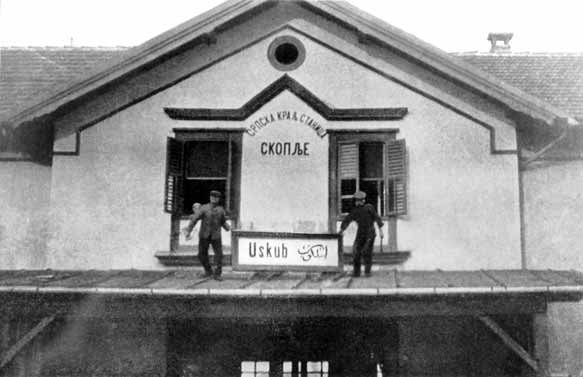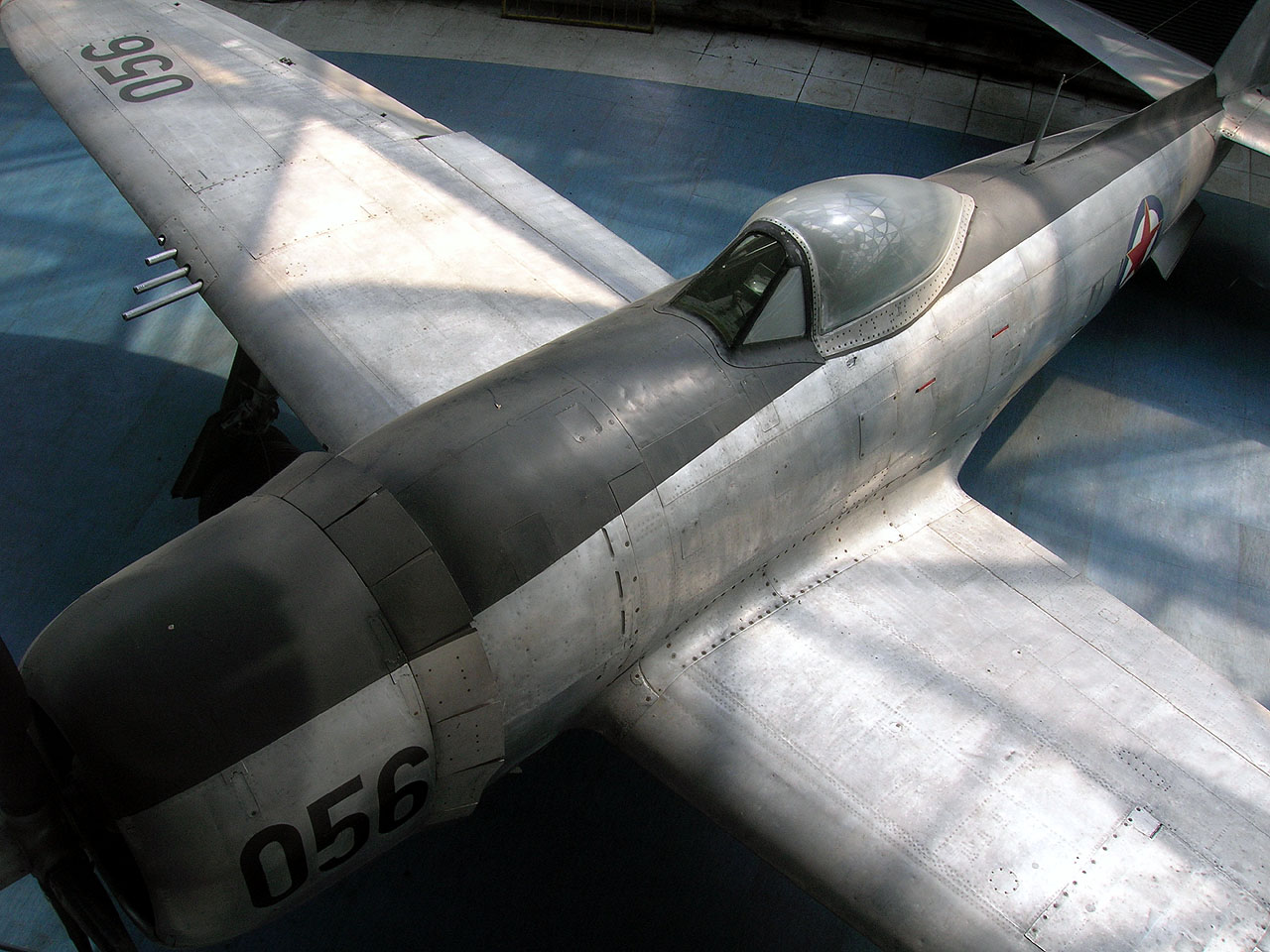|
39th Aviation Division
The 39th Aviation Division (''Serbo-Croatian: 39. vazduhoplovna divizija/ 39. ваздухопловна дивизија'') was a unit originally established in 1947 as the 5th Aviation Fighter Division (''Serbo-Croatian: 5. vazduhoplovna lovačka divizija / 5. ваздухопловна ловачка дивизија''). History 5th Fighter Aviation Division The 5th Fighter Aviation Division was established in April, 1947, with headquarters at Skoplje, with task of air defense of southern Yugoslavia. The division was direct under the Command of Yugoslav Air Force. It was formed from 111th and 113th Fighter Aviation Regiment. By the 1948 year this division was renamed like all other units of Yugoslav Army, so it has become 39th Aviation Fighter Division (''Serbo-Croatian: 39. vazduhoplovna lovačka divizija/ 39. ваздухопловна ловачка дивизија''). The commanders of division in this period were Petar Radević and Ilija Zelenika. Commissar was Krsto Bos ... [...More Info...] [...Related Items...] OR: [Wikipedia] [Google] [Baidu] |
SFR Yugoslav Air Force
The Air Force and Air Defence ( sh-Cyrl-Latn, Ратно ваздухопловство и противваздушна одбрана, Ratno vazduhoplovstvo i protivvazdušna odbrana ; abbr. sh-Cyrl-Latn, label=none, separator=/, РВ и ПВО, RV i PVO), was one of three branches of the Yugoslav People's Army, the Yugoslav military. Commonly referred-to as the Yugoslav Air Force, at its height it was among the largest in Europe. The branch was disbanded in 1992 after the Breakup of Yugoslavia. In the year 1990, the Air Force had more than 32,000 personnel, but as a result of its more technical requirements, the Air Force had less than 4,000 conscripts. History 1918–1941 World War II, Soviet influence By early 1945, Yugoslav Partisans under Marshal Tito had liberated a large portion of Yugoslav territory from the occupying forces. The NOVJ partisan army included air units trained and equipped by Britain (with Supermarine Spitfires and Hawker Hurricanes, see Balkan Air ... [...More Info...] [...Related Items...] OR: [Wikipedia] [Google] [Baidu] |
Skoplje
Skopje ( , , ; mk, Скопје ; sq, Shkup) is the capital and largest city of North Macedonia. It is the country's political, cultural, economic, and academic centre. The territory of Skopje has been inhabited since at least 4000 BC; remains of Neolithic settlements have been found within the old Kale Fortress that overlooks the modern city centre. Originally a Paeonian city, Scupi became the capital of Dardania in the second century BC. On the eve of the 1st century AD, the settlement was seized by the Romans and became a military camp. When the Roman Empire was divided into eastern and western halves in 395 AD, Scupi came under Byzantine rule from Constantinople. During much of the early medieval period, the town was contested between the Byzantines and the Bulgarian Empire, whose capital it was between 972 and 992. From 1282, the town was part of the Serbian Empire, and acted as its capital city from 1346 to 1371. In 1392, Skopje was conquered by the Ottoman Turks, ... [...More Info...] [...Related Items...] OR: [Wikipedia] [Google] [Baidu] |
Serbo-Croatian Language
Serbo-Croatian () – also called Serbo-Croat (), Serbo-Croat-Bosnian (SCB), Bosnian-Croatian-Serbian (BCS), and Bosnian-Croatian-Montenegrin-Serbian (BCMS) – is a South Slavic language and the primary language of Serbia, Croatia, Bosnia and Herzegovina, and Montenegro. It is a pluricentric language with four mutually intelligible standard varieties, namely Serbian, Croatian, Bosnian, and Montenegrin. South Slavic languages historically formed a continuum. The turbulent history of the area, particularly due to expansion of the Ottoman Empire, resulted in a patchwork of dialectal and religious differences. Due to population migrations, Shtokavian became the most widespread dialect in the western Balkans, intruding westwards into the area previously occupied by Chakavian and Kajkavian (which further blend into Slovenian in the northwest). Bosniaks, Croats and Serbs differ in religion and were historically often part of different cultural circles, although a large part ... [...More Info...] [...Related Items...] OR: [Wikipedia] [Google] [Baidu] |
3rd Air Command
The 3rd Air Command (''Serbo-Croatian: 3. vazduhoplovna komanda/ 3. ваздухопловна команда'') was a joint unit of Yugoslav Air Force. History It was established by the order from June 27, 1959, on November 23, same year per the "Drvar" reorganization plan of Yugoslav Air Force from the 39th Aviation Division with command at Batajnica. In 1961 it suffered a change inorganization. By the new "Drvar 2" reorganization plan of Yugoslav Air Force, 3rd Air Command has been disbanded. Its units were attached to 1st Aviation Corps. The commanders of Air command was Nikola Lekić. Organization 1959-1961 *1st Air Command ***103rd Signal Battalion *** Liaison Squadron of 3rd Air Command ***Light Combat Aviation Squadron of 3rd Air Command ** 94th Fighter Aviation Regiment **198th Fighter-Bomber Aviation Regiment ** 81st Fighter-Bomber Aviation Regiment **107th Fighter-Bomber Aviation Regiment **116th Fighter Aviation Regiment (1959-1960) **161st Air Base **165th Air Base ... [...More Info...] [...Related Items...] OR: [Wikipedia] [Google] [Baidu] |
Yugoslav Air Force
The Air Force and Air Defence ( sh-Cyrl-Latn, Ратно ваздухопловство и противваздушна одбрана, Ratno vazduhoplovstvo i protivvazdušna odbrana ; abbr. sh-Cyrl-Latn, label=none, separator=/, РВ и ПВО, RV i PVO), was one of three branches of the Yugoslav People's Army, the Yugoslav military. Commonly referred-to as the Yugoslav Air Force, at its height it was among the largest in Europe. The branch was disbanded in 1992 after the Breakup of Yugoslavia. In the year 1990, the Air Force had more than 32,000 personnel, but as a result of its more technical requirements, the Air Force had less than 4,000 conscripts. History 1918–1941 World War II, Soviet influence By early 1945, Yugoslav Partisans under Marshal Tito had liberated a large portion of Yugoslav territory from the occupying forces. The NOVJ partisan army included air units trained and equipped by Britain (with Supermarine Spitfires and Hawker Hurricanes, see Balkan Air ... [...More Info...] [...Related Items...] OR: [Wikipedia] [Google] [Baidu] |
7th Aviation Corps
The 7th Aviation Corps (''Serbo-Croatian: '') was an aviation corps established in 1953. It was formed by order from February 5, 1953, with command in Zemun as join unit composed from three aviation divisions and one aviation technical division. Corps was disbanded by order from June 27, 1959, with the "Drvar" reorganization of the Air Force. Organization ***Liaison Squadron of 7th Aviation Corps ***112th Signal Battalion **103rd Reconnaissance Aviation Regiment ** 211st Air Reconnaissance Regiment (1955–1959) *29th Aviation Division *39th Aviation Division * 44th Aviation Division * 48th Aviation Technical Division Commanding officers *Božo Lazarević Political Commissars * Nenad Drakulić Chiefs of Staff * Ljubomir Popadić *Vladimir Bakarić Vladimir Bakarić (; 8 March 1912 – 16 January 1983) was a Yugoslav and Croatian communist revolutionary and a politician. Bakarić helped to organise the partisan resistance in the Independent State of Croatia during World War ... [...More Info...] [...Related Items...] OR: [Wikipedia] [Google] [Baidu] |
111th Fighter Aviation Regiment
111th may refer to: *111th Delaware General Assembly, a meeting of the legislative branch of the state government *111th Engineer Brigade (United States), a combat engineer brigade of the United States Army *111th Field Artillery Regiment (United States), a 155MM towed artillery unit with a General Support/Reinforcing mission *111th Fighter Escadrille (Poland) of the Polish Air Force, a fighter unit of the Polish Army *111th Fighter Wing, an Air National Guard fighter unit located at NAS Willow Grove, Pennsylvania *111th Indian Infantry Brigade, an Infantry formation of the Indian Army during World War II *111th Infantry Brigade (Pakistan), an infantry brigade of the Pakistan Army *111th Infantry Division (German Empire), a unit of the Imperial German Army in World War I *111th Infantry Regiment (United States), represented in the U.S. Army by 1st Battalion, 111th Infantry *111th Maneuver Enhancement Brigade (United States), an air defense artillery brigade of the United States Army ... [...More Info...] [...Related Items...] OR: [Wikipedia] [Google] [Baidu] |
Training Squadron Of 39th Aviation Division
The Training Squadron of 39th Aviation Division (''Serbo-Croatian: Trenažna eskadrila 39. vazduhoplovne divizije / Тренажна ескадрила 39. ваздухопловне дивизије'') was an aviation squadron of Yugoslav Air Force formed in 1953 at Skopski Petrovac airfield. Squadron was part of 39th Aviation Division. It was equipped with US-made F-47D Thunderbolt fighter-bombers, Soviet Yak-9U trainer-fighters, Yugoslav-made Ikarus S-49C fighters and Aero-2 trainers, and other aircraft. It was disbanded in 1959 due to the Drvar reorganization.Dimitrijević, Bojan. ''Jugoslovensko Ratno Vazduhoplovstvo 1942-1992''. Beograd, 2006, p. 365. Equipment * F-47D Thunderbolt (1953-1959) * Yakovlev Yak-9U (1953-1959) *Ikarus S-49C The Ikarus S-49 was a Yugoslav single-seat, single-engine fighter aircraft built for the Yugoslav Air Force ( sh, Ratno vazduhoplovstvo i protivvazdušna obrana – RV i PVO) shortly after World War II. Following the Tito–Stalin Split i ... [...More Info...] [...Related Items...] OR: [Wikipedia] [Google] [Baidu] |
94th Fighter Aviation Regiment
The 94th Fighter Aviation Regiment (''Serbo-Croatian: 94. lovački puk / 94. ловачки пук'') was an aviation regiment established in 1944 as 111th Fighter Aviation Regiment (''Serbo-Croatian: 111. vazduhoplovni lovački puk / 111. ваздухопловни ловачки пук'') formed from Yugoslav partisan aviators, trained and equipped by Soviet Air Force. History 111th Fighter Aviation Regiment The 111th Fighter Aviation Regiment was established on December 25, 1944, in Novi Sad, from Yugoslav partisan aviators with the Soviet Air Force 17th Air Army's 117th Guards Fighter Aviation Regiment (117.GIAP). It has become independent form Soviet command and personal since May 1945. Regiment was part of 11th Aviation Fighter Division, it was equipped with Soviet Yak-1M fighter aircraft. Regiment has taken part in final operations for liberation of Yugoslavia. During the combat operations it was based at Novi Sad and Kupusina/Sombor airfields. After the war regiment has ... [...More Info...] [...Related Items...] OR: [Wikipedia] [Google] [Baidu] |
116th Fighter Aviation Regiment
The 116th Fighter Aviation Regiment ( sh, 116. lovački puk, ) was a unit originally established in 1944 as the 113th Fighter Aviation Regiment (, ). It was formed from Yugoslav partisan aviators, trained and equipped by the Soviet Air Force. History 113th Fighter Aviation Regiment The 113th Fighter Aviation Regiment was established on December 15, 1944, in Ruma, from Yugoslav partisan aviators with the Soviet Air Force 17th Air Army's 267th Fighter Aviation Regiment (267.IAP). It became independent from Soviet command and personnel in May 1945. The regiment was part of the 11th Aviation Fighter Division and equipped with Soviet Yak-1M fighter aircraft. The regiment took part in final operations for the liberation of Yugoslavia and was based at Ruma, Ilinovac, Bački Brestovac, Ilinovac (again) and Velika Gorica/ Pleso airfields. By 1945 then new Yak-3 fighters were introduced into service. After the war the regiment moved to Slovenia, being based at Ljubljana and Cerklj ... [...More Info...] [...Related Items...] OR: [Wikipedia] [Google] [Baidu] |
198th Fighter Aviation Regiment , the year 198 (CXCVIII) of the Julian calendar
{{mil-unit-dis ...
198th may refer to: *198th Airlift Squadron flies the C-130 Hercules *198th Battalion (Canadian Buffs), CEF, a unit in the Canadian Expeditionary Force during the First World War *198th Division (People's Republic of China), a military formation of the People's Volunteer Army during the Korean War *198th Infantry Brigade, was first formed as part of the United States Army Reserve's 99th Division See also *198 __NOTOC__ Year 198 (CXCVIII) was a common year starting on Sunday (link will display the full calendar) of the Julian calendar. At the time, it was known as the Year of the Consulship of Sergius and Gallus (or, less frequently, year 951 ''Ab u ... [...More Info...] [...Related Items...] OR: [Wikipedia] [Google] [Baidu] |



